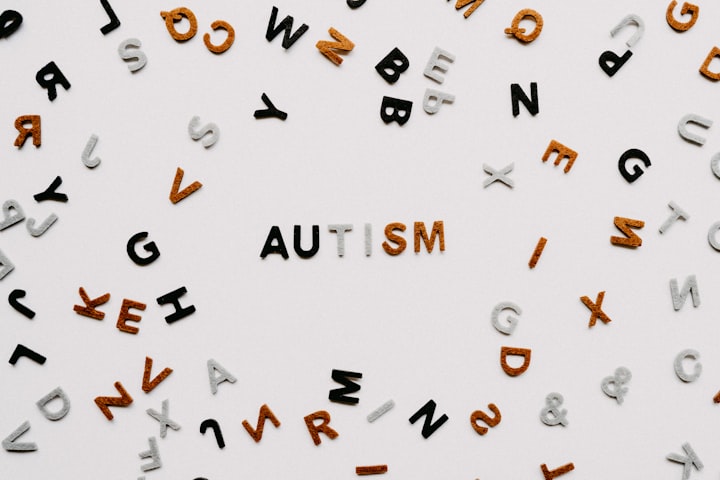Fad Treatments can be Dangerous for Children with Autism
Proceed with caution

Let me tell you about Paul, he was diagnosed with autism at age 2 and by the age of 8, he had participated in over 10 fad treatments for autism. Treatments included auditory integration training, gluten-free diet, rotation diet, magnet therapy, intravenous immunoglobulin, secretin, hyperbaric oxygen therapy, prism glasses and a number of medications. Why? Because a parent will do anything to help their child. The issue is that sometimes it takes away from other treatments, sometimes it is ineffective and sometimes it is actually harmful. At the most dangerous level, a five-year-old boy, Abubakar was given chelation therapy and went into cardiac arrest and died. https://www.medpagetoday.com/neurology/autism/1616
Fad treatments, regardless of danger or lack of research still continue today. Treatments such as chelation therapy (medication provided to lower the levels of mercury, lead, or other heavy metals) or facilitated communication (which involves a facilitator holding an individual’s hand and assisting them to communicate) can be a dangerous proposition for children with autism and their families.
There are a great many interventions that are available in a quick google search and sadly the number is rising each year. As recently as November 2020, google trends on the term facilitated communication reached 100 showing a very high interest in this topic. Facilitated Communication (FC) is an intervention in which the service provider, a “facilitator,” holds the individuals’ hand or wrist to help the person communicate by “typing” a message to the listener. To date, over 100 research articles have shown that it is the facilitator rather than the individual with autism who is actually communicating. Unfortunately, interventions like this one are not based on science and are based mainly on testimonials.
There are people out there, selling modern-day snake oil, who are taking advantage of the vulnerability of parents, especially those with children most recently diagnosed with autism, who are overwhelmed by the sheer number of interventions proposed to them. These parents ride a rollercoaster of emotion as their hopes are dashed again and again when they fall prey to these interventions. With autism affecting 1 in 54 children, there are many children and families who are affected by these interventions.

It is essential for parents and professionals to understand the importance of science-based interventions for children with autism. There are interventions based in the science of applied behavior analysis that has been researched for decades and has been shown to be effective for children with autism, such as, discrete trial instruction. However, the decision to implement a science-based intervention typically requires a commitment to years of hard work and it can take a bit of time before the effects of the intervention become evident.
It can be a tremendous amount of work for the parents to implement a science-based intervention. On the contrary, fad treatments are often marketed as miracle cures with immediate effects. They also usually require much less time commitment and cost to the family. So it is easy to see why the latter approach can be quite attractive, especially if they tout a cure.
As parents and professionals struggle with understanding the myriad of interventions available, there is one organization trying to make sense of it all. The Association for Science in Autism Treatment is trying to educate the public about the dangers involved in fad treatments. They compile findings from research studies so that you can get information without always having to do all the research yourself. In addition to my University Library and Google Scholar, this is a resource that I go when I am interested in reading about a new treatment that I am hearing about.
This link shares a page with a very long list of treatments that you can read through and learn more about. It categorizes them into what works, what needs more research, and what doesn’t work or is untested. Very helpful website: https://asatonline.org/for-parents/learn-more-about-specific-treatments/
Some questions parents may want to ask themselves when considering a new treatment for their child with autism:
How will this intervention address my child’s deficits?
2. Are there any research studies on this intervention?
3. Who will be implementing this intervention with my child and are they qualified to do so?
4. Is there a chance that this intervention could be harmful to my child?
5. What am I expecting from this intervention? Is it realistic based on prior results?
6. How will data be recorded so that I can see my child’s progress and make informed decisions?
This is your child’s life and you are helping to guide them along the path. There is a great deal of responsibility that sits upon your shoulders. There is nothing wrong with looking for a professional to help you to make sense of things along the way. You can speak to your child’s doctor, a psychologist or a behavior analyst, or any other professional you trust. So, most importantly, it is important to ask questions, to have doctors and clinicians explain interventions, scour the research for the efficacy of the intervention, make informed decisions and never feel pressured to move forward with any intervention for your child.
I hope this may help to guide some of you and give you some answers you may be looking for. You can follow my work on Twitter and Facebook for regular updates or my personal blog as well.
Here is another article you might enjoy reading...
About the Creator
Mary McDonald
Professor, behavior analyst, writer, artist. Her doctorate is in behavioral psychology. She works with individuals with autism and their families.






Comments
There are no comments for this story
Be the first to respond and start the conversation.